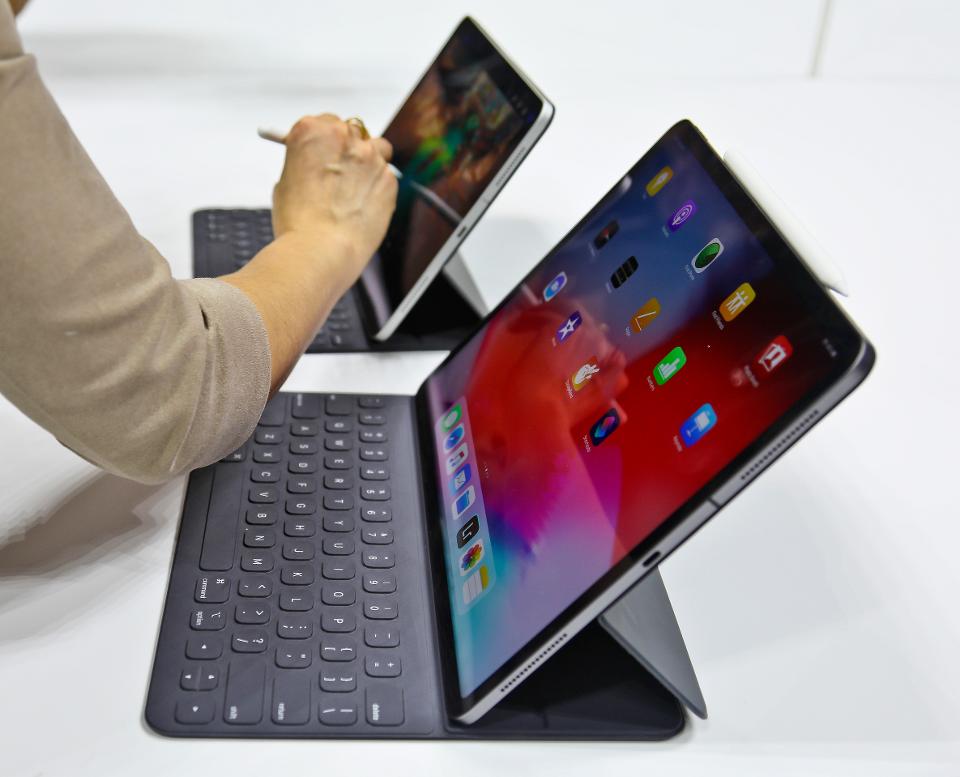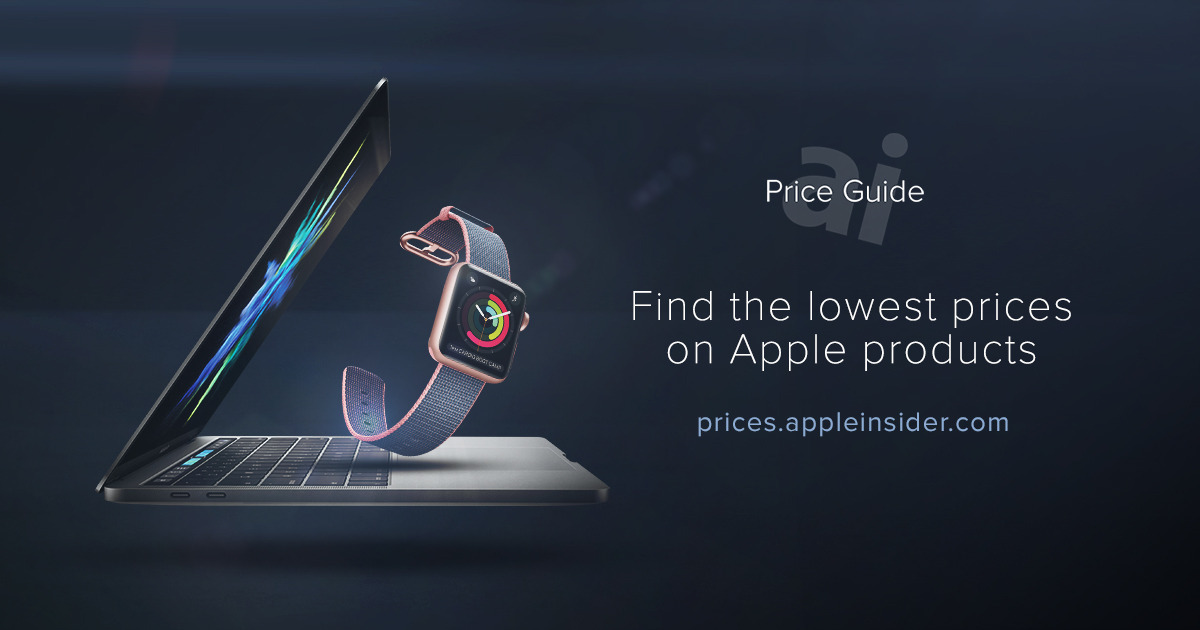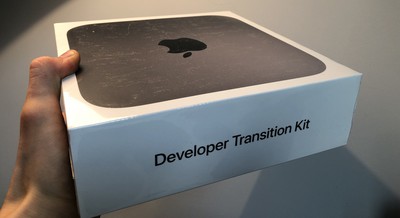June 29 update below, post originally published June 27.
Following the announcement at WWDC, Apple’s move away from Intel to ARM over the next two years offers Tim Cook and his team a chance to reshape the Mac platform with new architecture, new code, and new practices.

FILE – In this Thursday, Oct. 27, 2016, file photo, a guest looks at the Touch Bar on a MacBook … [+]
ASSOCIATED PRESS
June 28 update: As has long been suspected, this will see the iPad and Mac platforms converge in terms of look and functionality. WWDC shows the direction Apple would prefer to happen, and its a bias towards the iPad. Charles Tumiotto Jackson for MacO’Clock takes a closer look at the moves to bring the interfaces together, which would make apps more portable:
“Pretty much everything new about the macOS redesign looks like a version of iOS to me. The rounded corners everywhere, especially on the dock, the new icons, the control center… Pretty much everything now looks like the interface of an iPad.”
One of the biggest differences remains Apple’s control over the iPad platform compared to Mac. But as we’re about to see, that is starting to change.
June 29 update: Apple already has significant experience with ARM hardware, both in designing the silicon and integrating it with operating systems, thanks to the iPhone and iPad. The latter, especially the iPad Pro, will have given management the confidence that the Mac platform would retain the power of Intel alongside the potential of a tighter design.
That’s already on show, with the team at MSPowerUser highlighting the difference between Apple’s Developer Transition kit (a Mac Mini running MacOS on an A12Z ARM processor previously used in the iPad Pro) and Microsoft’s ARM powered Surface Pro X:
“The first thing developers did when they received it was run some benchmarks, and the results are rather embarrassing for Microsoft and Qualcomm.
“Multiple Geekbench results have indicated that the Developer Transition Kit features average single-core and multi-core scores of 811 and 2,871, respectively. This compares rather favourably to a single-core score of 726 and a multi-core score of 2,831 for Microsoft’s Surface Pro X power by the Microsoft-tweaked 3.0GHz SQ1 system-on-a-chip (SoC).”
Remember this is an early public build of the OS, and a Mac Mini running a repurposed processor. Expect more gains to be found over the next year .

People try the Microsoft Surface Pro X, Wednesday, Oct. 2, 2019 in New York. (AP Photo/Mark … [+]
ASSOCIATED PRESS
One of the first visible steps is to remove Boot Camp and reduce the flexibility of Mac hardware. Apple believes that users should not be concerned, but what is good for Apple is not always good for developers or consumers.
We’ve seen this recently with Basecamp’s Hey email app and the problems it has navigating Apple’s App Store policies, especially around the functionality of the app that Apple wanted to see and Basecamp’s use of an external payment service that was not Apple’s (where Apple collects thirty percent of the revenue).
This was a high-profile case, but not a unique case. Apple has set its own rules for entry into the App Store, from earning income through the functionality, to the look and style of your apps. And the App Store is the only way to reach and interact with Apple’s customer base (something that is under antitrust investigation by the EU Commission),
That stands in contrast to the Mac platform.
Yes there is a Mac App Store where developers can submit their apps into Apple’s ecosystem… but the Mac platform is far more open to loading in applications from other sources, it’s far more open to different payment systems, and it’s far more open to making different decisions than Apple would make.
As Tim Cook continues to redefine what it means to be a Mac, one of the most noticeable influences is the iPad. Not only has the iPad Pro moved towards the ethos of a MacBook with the release of a Magic Keyboard and touchpad for the tablet, the user interface of both MacOS and iPadOS have a growing similarity.
The closed system of mobile devices remains something Apple is especially proud of. As the Mac platform moves to ARM and the expected release of the first ARM powered MacBook Pro later this year, will Apple take this opportunity to follow the iPhone and the iPad down this route?

An iPad Pro is reviewed after an event announcing new products Tuesday Oct. 30, 2018, in the … [+]
ASSOCIATED PRESS
Apple may never complete that journey, but it has already taken steps down that route, with the latest happening during last week’s WWDC. Apple has confirmed that Boot Camp will not be available on Mac ARM machines. When these computers arrive, they will not support Bootcamp. This is the software that allows alternative operating systems to run on the Mac hardware. Instead the only route will be to use virtual machines that run inside MacOS. Tom Warren for The Verge:
“ Apple later confirmed it’s not planning to support Boot Camp on ARM-based Macs in a Daring Fireball podcast. “We’re not direct booting an alternate operating system,” says Craig Federighi, Apple’s senior vice president of software engineering. “Purely virtualization is the route. These hypervisors can be very efficient, so the need to direct boot shouldn’t really be the concern.” “
Boot Camp is a vital tool for many, and Apple’s reassurances of ‘shouldn’t really be the concern’ will be welcome if you are explicitly using your Mac in the way that Apple intended. But that is not everyone. The Mac platform – especially but not limited to those in the ‘Pro’ class – are workhorse machines with specific needs. Apple’s push towards its future could easily push those users away from the platform, just as the move from 32-bit to 64-bit was smooth for most but a business critical mistake for others.
The confirmation of MacOS for ARM is not yet a week old but Apple is already removing a key feature. The change clearly benefits Apple, and gives Apple more control over the platform.
Is this the only move that Apple will make? The mood music from MacOS is that ‘things are changing’ and in the case of Apple’s software policies over Hey, ‘these app store rules are fixed.’ How far Apple will ‘lock down’ MacOS remains to be seen. Will it remain much as it is, or will Tim Cook and his team push forwards to the business model that has proven successful on the iPhone and iPad?
Now read more about the latest cooling issues on the MacBook Air…


